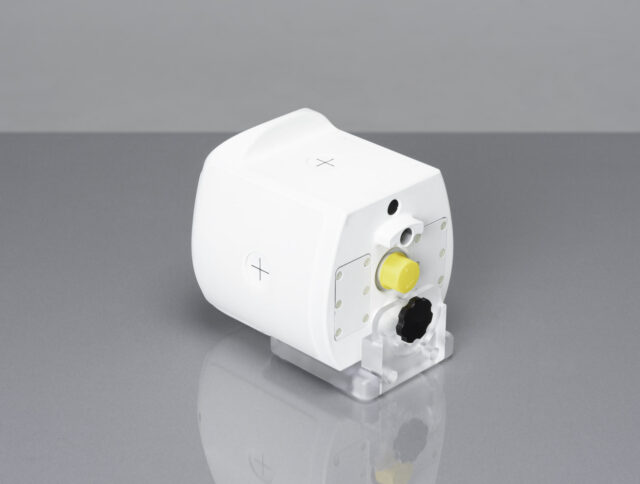
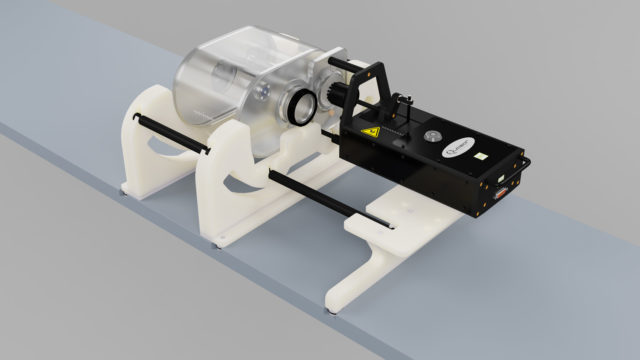
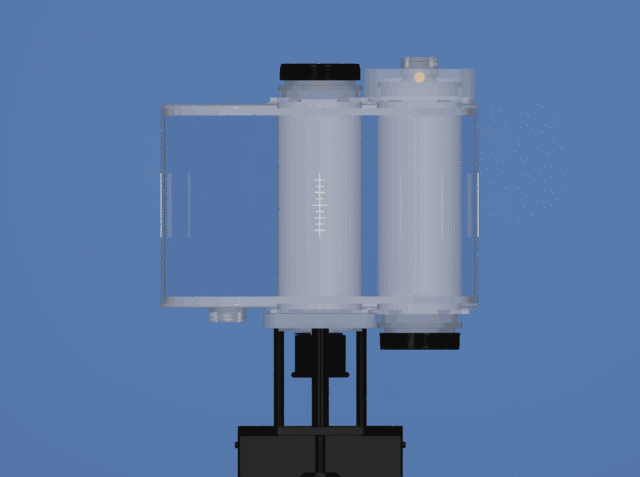
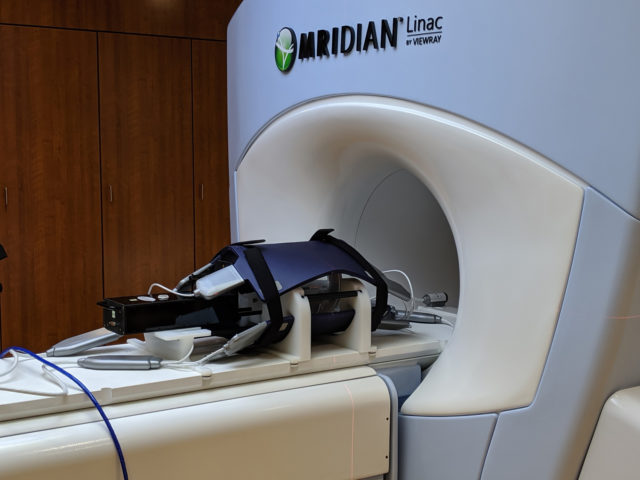
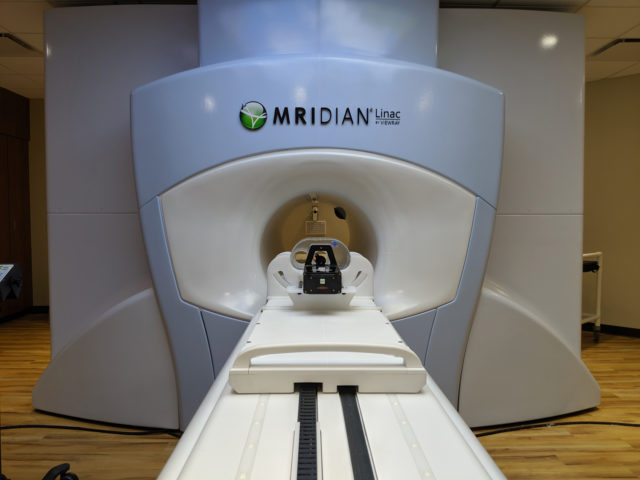
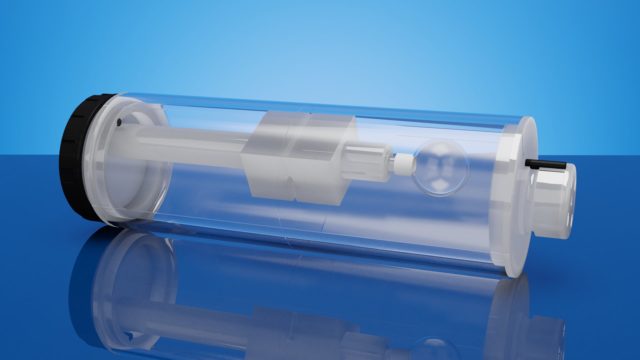
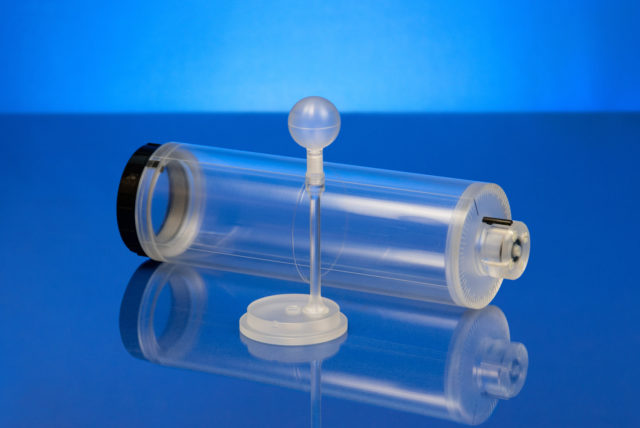
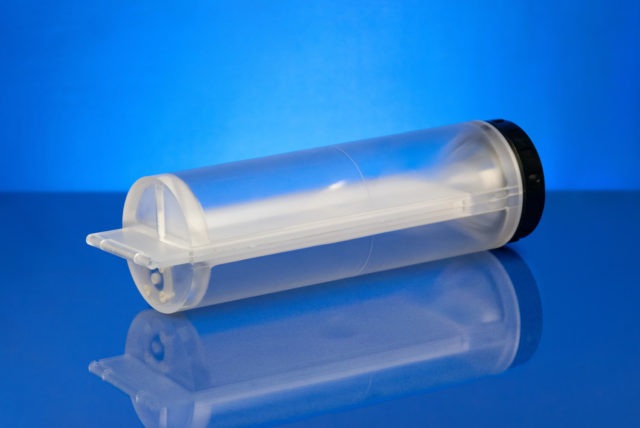
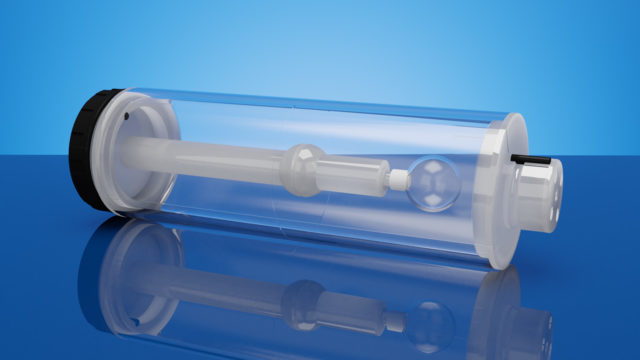

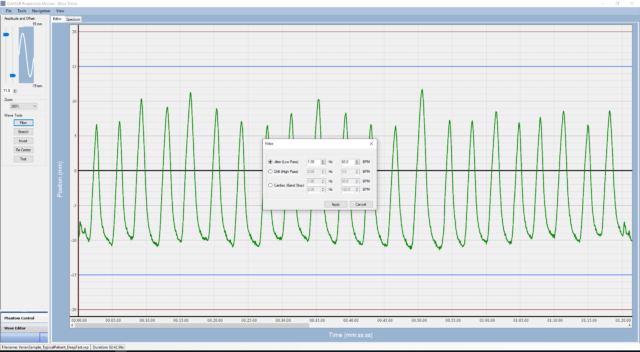
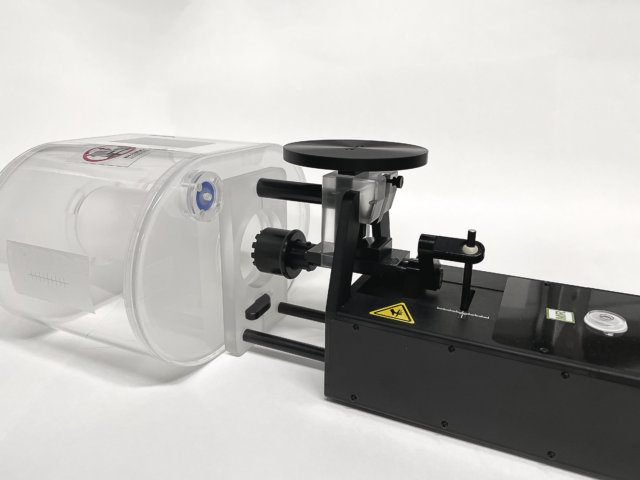
QUASAR™ MRI⁴ᴰ Motion Phantom v1.0
Quasar MRI⁴ᴰ is the world’s first MR-safe programmable motion phantom. Adapting for motion in Radiation Therapy requires advanced QA tools and the MRI⁴ᴰ enables you to develop, test and validate advanced 4D treatment delivery protocols on MR-sim and MR-Linacs.
Interchangeable inserts are available for imaging, planning, targeting, dosimetry and delivery QA. The included software provides tools to create, import, edit and stream patient-specific respiratory waveforms.
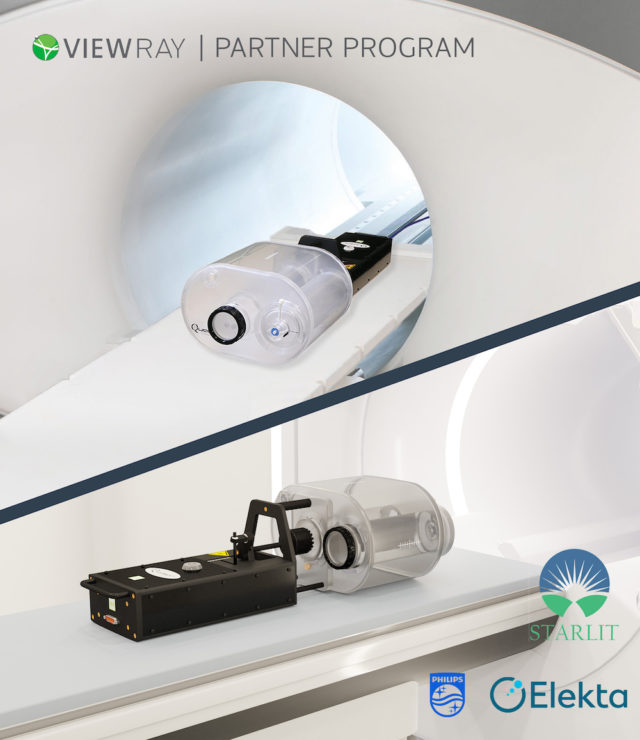
The world’s experts in MRgRT are also our partners.
Modus QA remains committed in helping medical physicists around the world achieve accuracy by providing clinicians with confidence in delivering 4D MRI guided adaptive radiotherapy techniques using the latest MRI-based technology. We are proud to be part of the ViewRay partner program and the STARLIT Elekta / Philips consortium (System Technologies for Adaptive Real-time MR image-guided therapies) to provide necessary capabilities related to 4D MRgRT quality assurance and dosimetry.
Learn More-
Specifications
- MR-Safe Motor Assembly: 50.5 cm L x 15.25 cm W x 18 cm H (dimensions), 3.2 kg (weight)
- Linear Motion: ± 20mm (continuous sinusoidal), ±15mm (programmable) along Z axis
- Non-linear Motion: 60 deg total twist range along X/Y axis (Rotation Mode), 30 deg (max) total twist range (Sinusoidal Mode, amplitude dependent), 11 deg (max) total twist range (Oscillation Mode, waveform dependent)
- Motion Precision: ± 0.25 mm (along Z-axis), ± 2º (rotation twist)
- MR Body Oval: liquid fillable 20 cm L x 30 cm W x 20 cm H with two insert openings for central or offset imaging
- Interchangeable Insert: 25 cm long x 7.4 cm internal diameter, 1 kg (when liquid filled)
- Mounting Stem & Target: mounting stem attaches 30 mm spherical target (air or liquid filled) to seal-ring lid
- Seal-Ring Lids: 1-w/central mounting stem position, 1-w/dual offset mounting stem positions, 1-w/no mount position
- Dovetail Collar: with thumbscrew lock to secure position of fixed interchangeable insert within MR Body Oval opening
- Cables: quadruple shielded DB 15 male to female cables, CAT5 Ethernet cable
- Power Supply: DC power supply with AC power cord (110-220V, 50-60Hz)
-
Minimum Technical Requirements
- Operating System: Windows 7 SP1, 8.1 or 10
- Ports: 1 Ethernet
-
100-1022: QUASAR™ MRI⁴ᴰ Motion Phantom
- 1-Phantom
- 1-Software License
Features
100% MR Safe
The patented MRI⁴ᴰ design allows phantom placement directly within the MR bore enabling quick, easy and precise operation. Efficient piezoelectric motor assembly allows for high quality, artifact-free imaging up to 3T. MRI⁴ᴰ design preserves image quality by maintaining B0 homogeneity and minimizing magnetic eddy currents within the MR system.
Workflow Efficiency
Compact, integrated phantom design along with easy-to-use motion software saves time and increases operational efficiency by reducing or eliminating the need for complex or tedious assembly before and after operation. Superior imaging contrast provides easy target detection, which simplifies testing setup while maximizing accuracy.
Testing Versatility
Fillable components allow complete customization of contrast media, enabling improved visualization of desired structures. Configurable and interchangeable dosimetry inserts increase the functionality of the MRI⁴ᴰ. With the flexibility of choosing motion location and phantom orientation, the MRI⁴ᴰ is able to fulfill a physicist’s most demanding QA needs.
System Compatibility
Configurable contents within the body oval and inserts create utility within MR, CT and PET-based systems. MRI⁴ᴰ can perform motion QA across all platforms, providing a comprehensive end-to-end validation of treatment protocols. Use the MRI⁴ᴰ with confidence on all of your radiation therapy treatment planning and delivery systems.
Latency Tools
MRI⁴ᴰ provides analog input and output connectivity to provide real-time latency statistics without the use of an external oscilloscope. The user can select beam on/off triggering points within the software to quantify the treatment system’s total latency values. Intuitive target delineation and real-time latency reporting increases the MRI⁴ᴰ's ease of use.
Ultra-Low Latency Motion
The MRI⁴ᴰ features an ultra-low latency controller (500µs), which does not contribute significant phantom latency to the motion management system analysis. An ultra-low latency phantom is critical for accurate latency measurements and instilling confidence that your QA process has provided you with the most accurate and precise information.
Complex Motion
Programmable 3D target motion provides in-depth QA of MRgRT gating and tracking systems. Users have the choice to set the complexity of motion with our intuitive Respiratory Motion Software. Test the limits of motion management systems by delivering clinically relevant and demanding motion sequences with the MRI⁴ᴰ.
Software
Included with the MRI⁴ᴰ phantom is an intuitive programmable respiratory motion QA software. This locally-installed package enables the control of the phantom’s motion, importation and customization of motion waveforms and the reporting of system latency values. An incorporated Deep Inspiration Breath Hold Function increases workflow efficiency for users to test DIBH protocols.

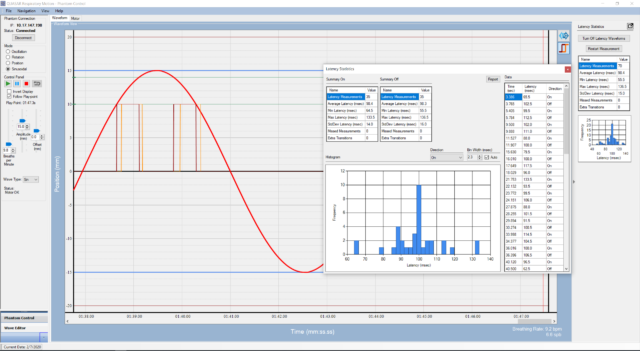
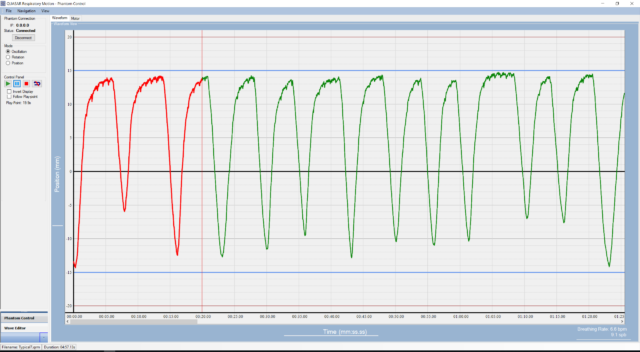
Complex Motion Control Options
MRI⁴ᴰ offers full control of your phantom’s motion profile. Our Respiratory Motion QA Software offers multiple operation modes to increase utility. From adjustable sinusoidal motion and simple test patterns to accurate playback of complex 3D waveforms, the MRI⁴ᴰ offers the flexibility to choose your motion complexity for your required testing sequence.
Customizable Waveforms
In addition to an extensive library of pre-loaded waveforms, the Respiratory Motion QA Software enables the import of acquired waveforms from a number of respiratory gating and motion tracking systems. The waveforms are completely customizable, improving the user experience when modifying waveform patterns to achieve the desired testing protocol.
Latency Data Reporting
A new generation of MR-guided radiotherapy systems requires detailed reporting of their system latency. The MRI⁴ᴰ is equipped for current and future testing capabilities needed for gating and tracking techniques. Using the advanced latency reporting capabilities, physicists can improve the accuracy and confidence of their MRgRT delivery.

